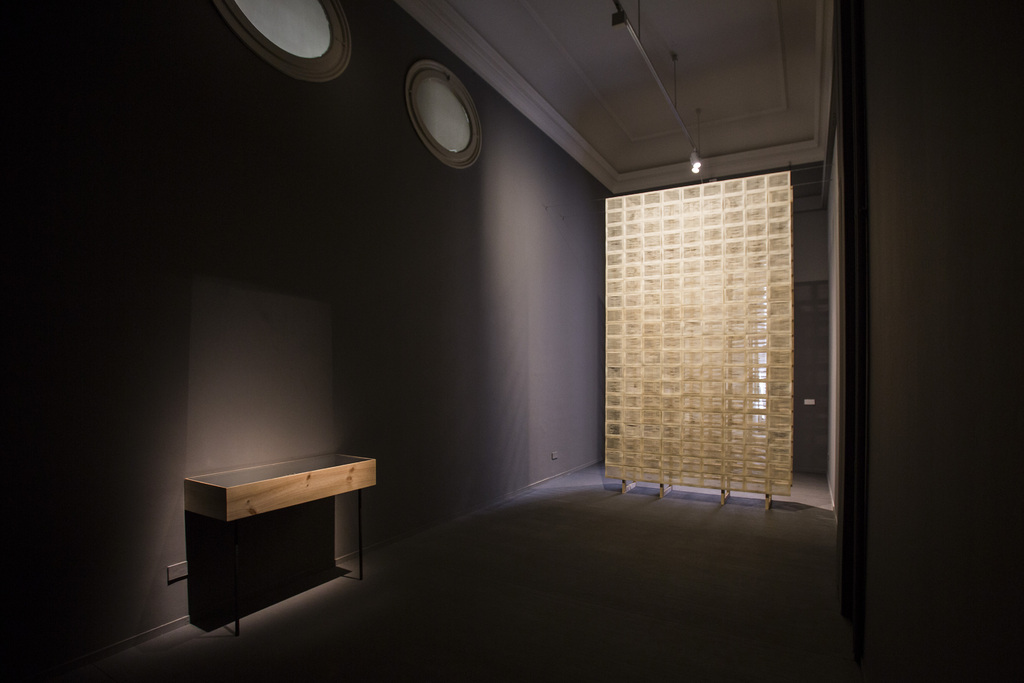In vain
Mar Arza
16.06.2018 – 14.10.2018
Curator: Valentín Roma
Opening: Friday 15 June 7pm
Free guided tours: Tuesday at 6 pm, Saturday and Friday at noon
This project questions two certainties that have framed interpretations of art, knowledge and images: clarity versus opacity, transparency versus hermeticism, light versus the blackout. The blind presents its full disruptive potential here: it is an element for looking through, yet it also poses a dilemma in which we find ourselves obliged to translate or to decode, or to assume our position even as we acquire it.
In The Castle (1926), Kafka bequeathed us an image through which we can ‘observe’ how the symbolic architecture of power is erected, its endless rooms, the difficult bureaucratic and social terrain, those absurdities that dim lucidity or, in contrast, illuminate the most violent abstractions.
In keeping with this logic of the normalisation of the absurd, Leslie Kaplan in Excess—The Factory (1982) and Alain Robbe-Grillet in Jealousy (1957) analysed the alienating component in every hierarchical system, be it the capitalist mode of production or the administering of feelings.
Mar Arza (Castelló de la Plana, 1976) continues in the wake of these writers, exploring the other side of categorisations, as well as certain mechanics polarised between clarifying and muddying, between standardising and imposing. The work of the artist can no longer be framed in an intangible terrain. Similarly, aesthetic contemplation is no longer the personal epiphany it once was. When we speak of images, we are also alluding—above all we are referring—to public uses that they permit or which they push us towards; when we entreat people to see, we are setting in motion a series of collective and ideological operations, the taking of a position.
In Vain problematises a certain dialectics that has in the past influenced the interpretation of art, knowledge and images, the extremes of which are clarity versus opaqueness, transparency versus hermeticism, and light versus the blackout. However, there are many disruptive paths, occlusions, diagonals and flickerings. The blind presents its full disruptive potential here: it is an element for looking through, yet it also poses a dilemma in which there is little we can do, in which we find ourselves obliged to translate or to decode. A vantage point and a cloister, a refuge and a prison, are not both ‘excesses’ the danger of the visible, the fears and impossibilities of reading, the temptation to keep quiet or the need to speak?








